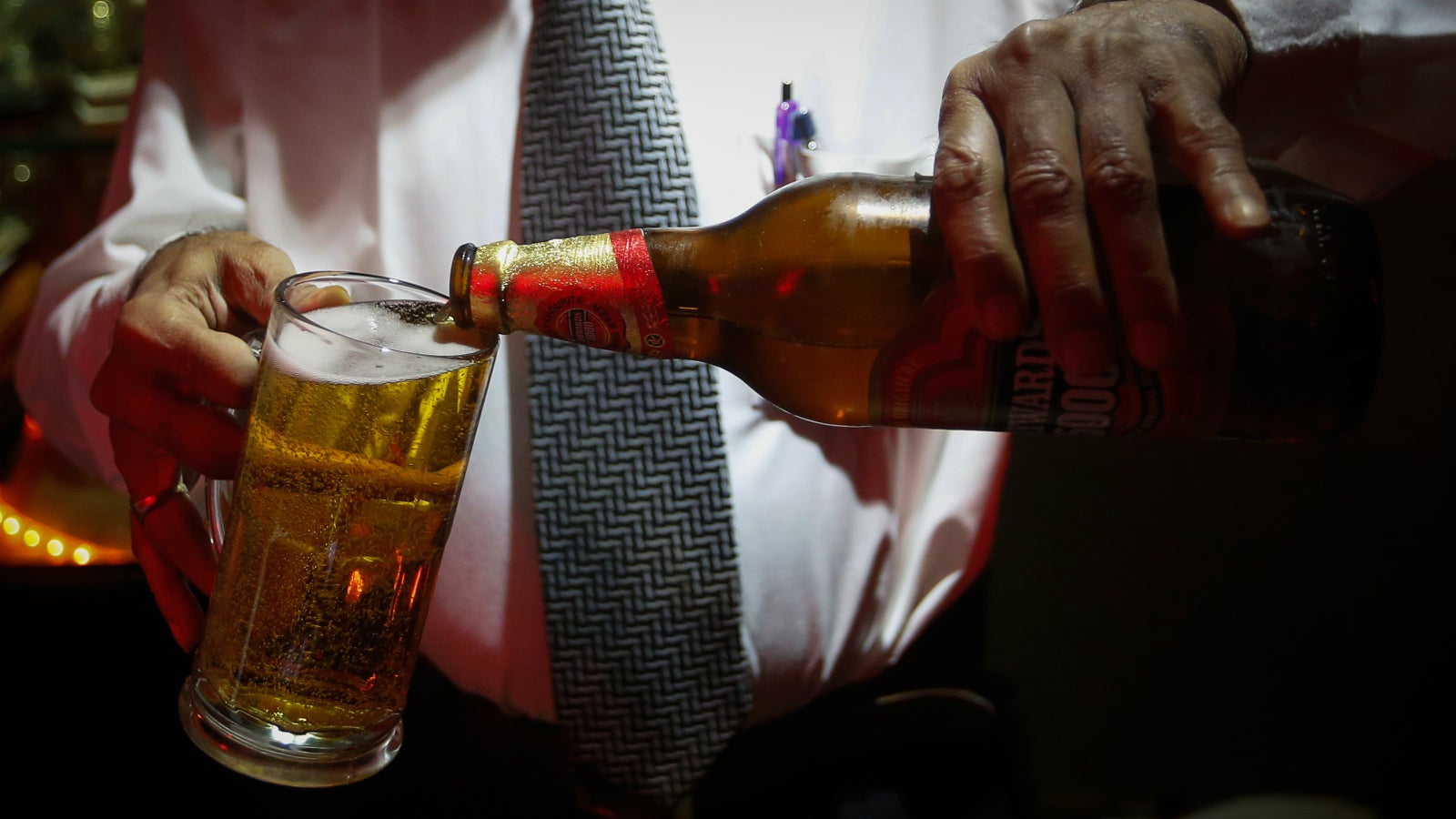Prohibition or not, Indians are consuming less alcohol
Late on May 15, Bihar’s chief minister Nitish Kumar vowed to bring alcohol prohibition to India’s most populous state, Uttar Pradesh, if his party alliance was voted to power there next year.


Late on May 15, Bihar’s chief minister Nitish Kumar vowed to bring alcohol prohibition to India’s most populous state, Uttar Pradesh, if his party alliance was voted to power there next year.
Kumar, a powerful regional satrap, had only last month implemented prohibition in his home state of Bihar. Uttar Pradesh will go into polls next year, and Kumar and his alliance are trying to gain a strong foothold in the state.
Over the past two years, alcohol prohibition has taken centre stage in India’s political circus, with at least two states—Kerala and Bihar—bringing in prohibition, while another, Tamil Nadu, seems set to ban liquor from next month.
But, dry states or not, India’s liquor industry is dramatically sobering up.
After five years of strong expansion with about 6% growth annually, alcohol sales in the country grew by a paltry 0.2% in 2015, according to research firm Euromonitor. And, much of that had to do with state government policies and higher taxation laws.
“This (marginal growth) was on the back of further enforcement of partial alcohol ban in Kerala state, promotion of regional players leading to curtailment of capacity for national players in Tamil Nadu and regional effects of state taxation increases such as beer in Orissa,” Sanjeev Raikar, an analyst at Euromonitor said.
But it isn’t just Indians who are drinking less.
Globally too, volumes of liquor slipped for the first time in fifteen years mostly due to volatile currency and erratic commodity prices. In 2015, alcohol volumes dropped by 0.7%.
Tipplers in India
In India, volumes of spirits—whiskey, rum and brandy—stumbled by 1.7% as fewer liquor bottles were sold 2015. Only sales of scotch whiskies, white rum, and vodka helped lift sales for some companies, according to Euromonitor.
The country’s tipplers also continued to down more and more bottles of beer, with a 2% increase in volumes last year.
In terms of brands, here’s what the scoreboard in India’s alcohol business currently looks like:
And to get things going in a slow-growth market, liquor companies are throwing more money on marketing.
“In wake of slackening spirits market, manufacturers are expanding their market segment by reaching out to women as potential consumers, aggressively promotion via digital media and focusing on entry level alcoholic beverages with lower ABV (alcohol by volume), to counter the low volume growth,” said Euromonitor’s Raikar.
But given the current climate of public disdain for booze among politicians, it’ll be hard work to get the Indian tippler to fall back in love with the bottle.